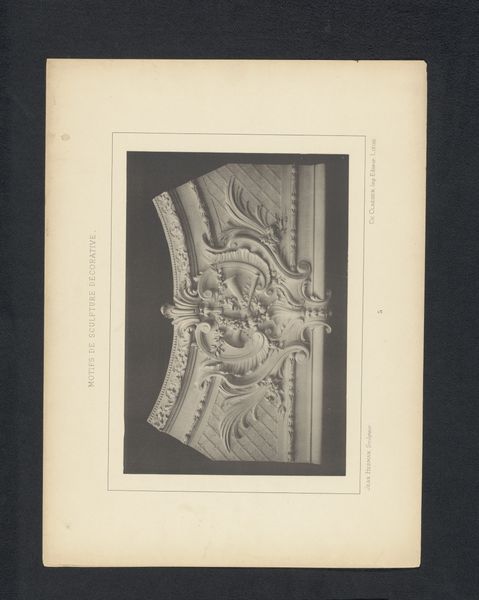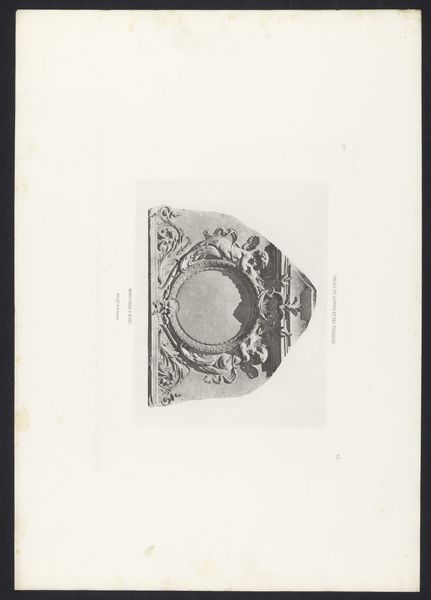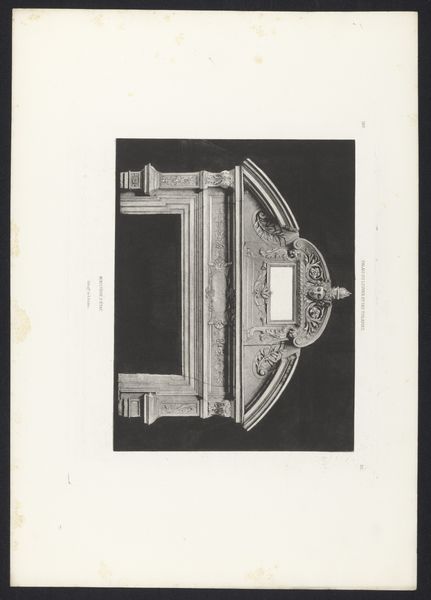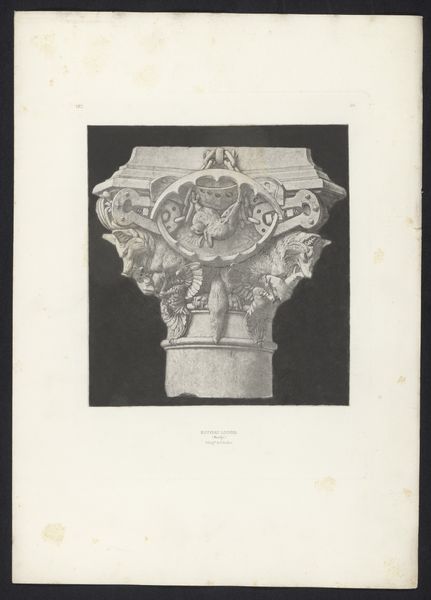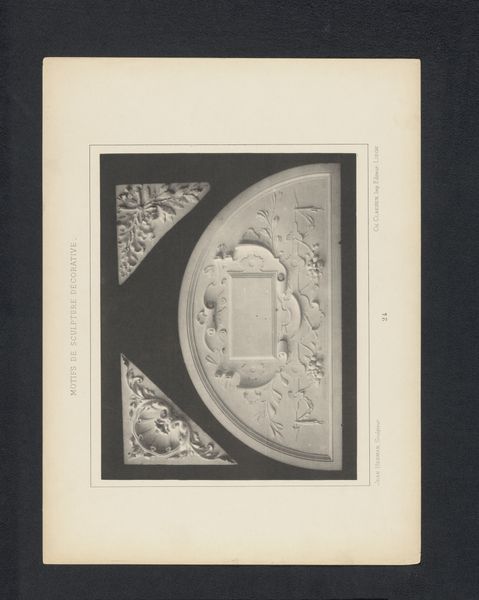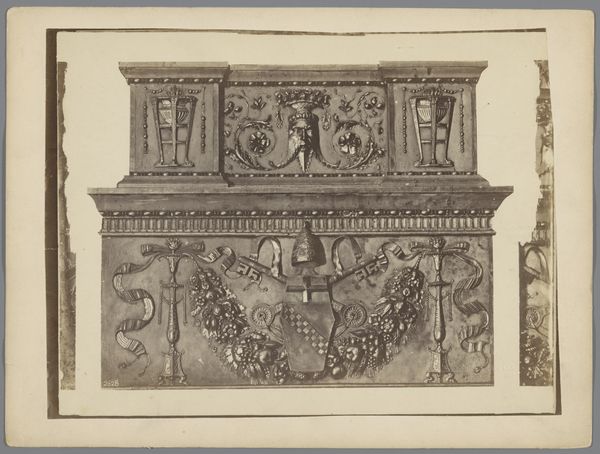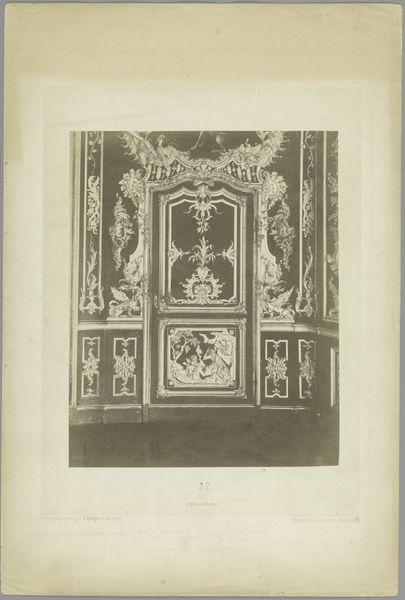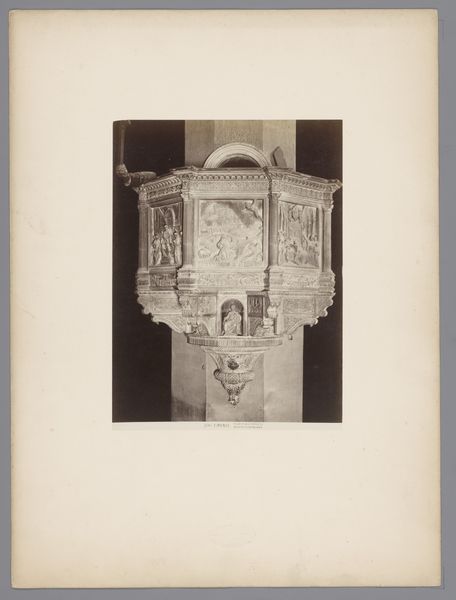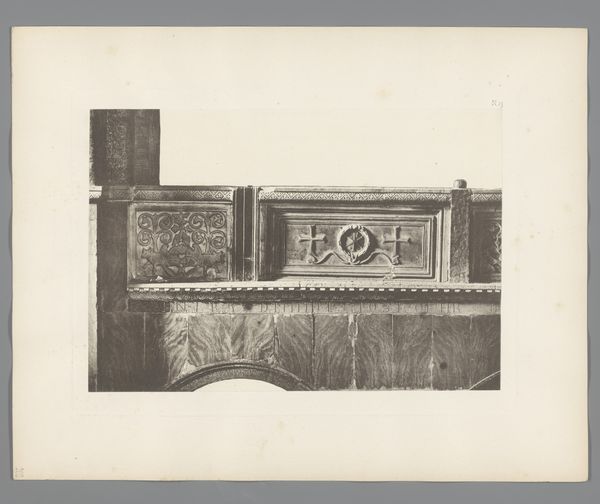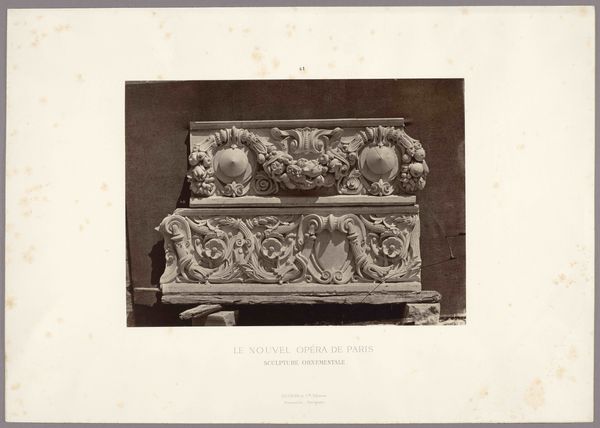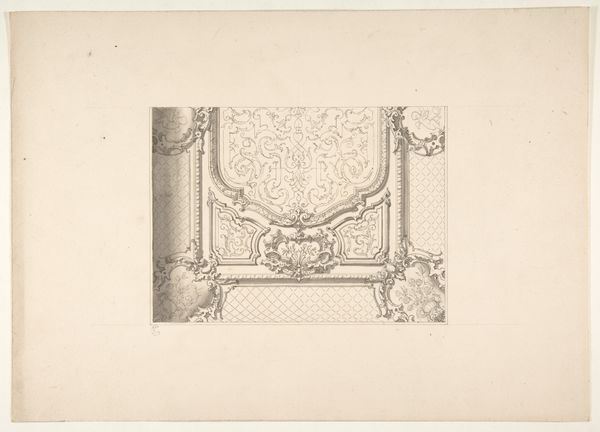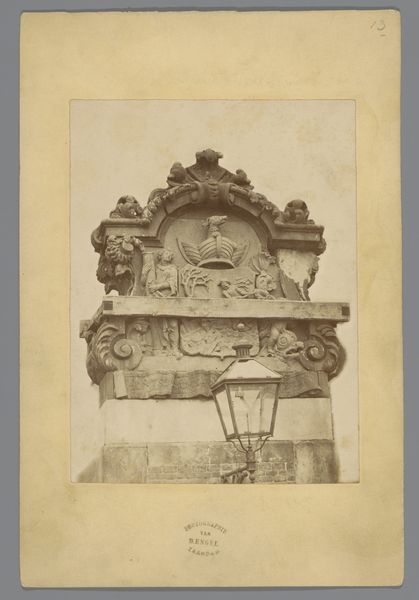
Bovenlicht (vermoedelijk) van het Palais des Tuileries te Parijs before 1870
0:00
0:00
edouardbaldus
Rijksmuseum
drawing, print, intaglio, engraving, architecture
#
drawing
# print
#
intaglio
#
engraving
#
architecture
Dimensions: height 173 mm, width 213 mm
Copyright: Rijks Museum: Open Domain
Curator: I’m struck by the intense detail of this engraving, almost photographic in its clarity. It's attributed to Édouard Baldus, and it depicts a skylight believed to have been part of the Palais des Tuileries in Paris before 1870. Editor: The fragment we see certainly projects an air of weighty grandeur, even in monochrome. It reminds one of a Roman ruin. The tight composition and heavy ornamentation evoke a past empire. Curator: Baldus clearly captured the visual language of power, here. The meticulously rendered leaves, scrolls, and the central cartouche emblazoned with “1801.” These ornaments all contribute to the overarching narrative of dynastic authority, reminiscent of the First Empire under Napoleon. Editor: Precisely. And the scale must have been enormous. It seems more than just a light source. It seems, with its commanding architecture, to function as a symbolic aperture toward a world curated to convey messages of legitimacy and dominion. The engraver is careful to reproduce the textural interplay between light and shadow—the very device it seeks to bring into a darkened space. Curator: Absolutely. And let’s not forget, this print allows us to glimpse into the visual vocabulary embraced during a tumultuous period of French history. The motifs were purposefully deployed to convey stability, and ultimately, permanence. Consider the egg-and-dart molding; it is used extensively in Greco-Roman art, connoting new life and protection, visually cementing that claim of timeless governance. Editor: It almost makes you wonder about the intentions behind its meticulous documentation. To me, this isn't just an architectural record; it seems to act as an artifact imbued with the echoes of imperial power and subsequent transformations. It’s interesting that Baldus would preserve this record of something both aesthetically rich but vulnerable in the face of political change. Curator: The Palais des Tuileries no longer stands, but its echo resonates through documents like this print. Its symbols may yet continue to stir up stories and historical consciousness for years to come. Editor: I agree, its materiality invites reflections that go well beyond surface observation.
Comments
No comments
Be the first to comment and join the conversation on the ultimate creative platform.
